Media | Articles
The Great White Six-Speed Shark
With all the chop in the water about whether buying my needy 183,000-mile 2008 Nissan Armada was a good move or an awful one, I thought I’d tell a story that shows that I am, in fact, capable of making rational automotive decisions.
In 1990, BMW’s follow-up to its successful, big two-door 6 Series coupe (the 635CSi) was a new model—the E31 8 Series. The new coupe, badged as the 850i through 1992 and the 850ci 1993 through 1997, was intended to be BMW’s new tour de force flagship, featuring its new V-12 engine, electronic throttle, multilink rear end, stability control, and other state-of-the-art features. Not surprisingly, these changes made the car heavy, complex, and expensive. When it debuted, the 850i was stickered at roughly $77,000 base price, rising to about $94,000 by 1997. [As if those figures don’t sound high enough, adjusting for inflation pushes them to more than $180K today.]
The coupe was received by the press and enthusiasts the way the Porsche 928 was viewed: at best, a touring car; at worst, a boulevard cruiser—but not a sports car. The fact that the car is sharp, with its pointy shark nose and hide-away headlamps, and looked a bit like what was then the current Toyota Celica Supra (second-generation A60), didn’t help matters. A less-expensive V-8-powered 840i was offered 1993–95, but it didn’t sell well either. A total of only 6920 E31 8 Series cars were sold in the United States before BMW pulled the plug.
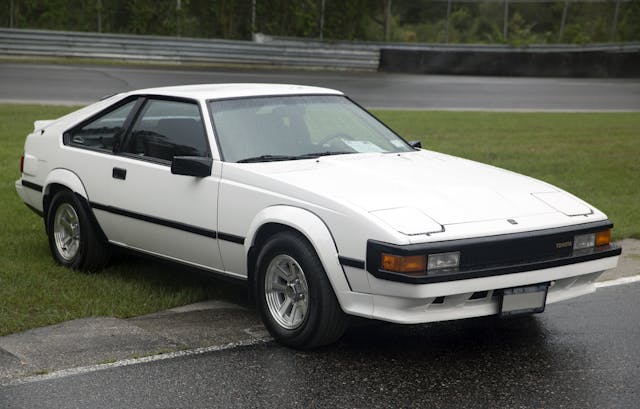
As used vehicles, the 12-cylinder 8 Series cars were viewed as troublesome money pits with no financial upside. The car’s V-12 engine (the 850i’s M70 and its successor, the M73 in the ci) was designed as two M20 inline sixes mated together, and this design included using two of everything—two ECUs, two air flow meters, two throttle bodies, two fuel pumps, etc. If something went wrong, the car went into limp-home mode. Most of E31 8 Series production was before 1996, which is important because that’s when all cars sold in America received the standard OBD-II connector, so it’s not like you could plug a $50 scan tool into an 850i to find out the limp-mode problem—diagnosis generally required an expensive trip to the dealer. Like the V-12-equipped E32 750i sedan of the same era, you couldn’t give a needy 850i away; running cars needing work routinely sold for two- or three-thousand dollars. Dead ones were even less.
However, time and perspective are funny things. With age, the E31 8 Series looks better and better. It’s a true coupe with no B-pillar; roll down the front and rear windows and there’s an unbroken expanse of space, just like in my ’73 E9 3.0CSi coupe. The rear end of the car has that glorious fat planted look that’s all the rage. And no one remembers the whole Celica thing anymore, just like no one remembers how the 10th-generation Ford Thunderbird looked like a 635CSi.
Marketplace
Buy and sell classics with confidence
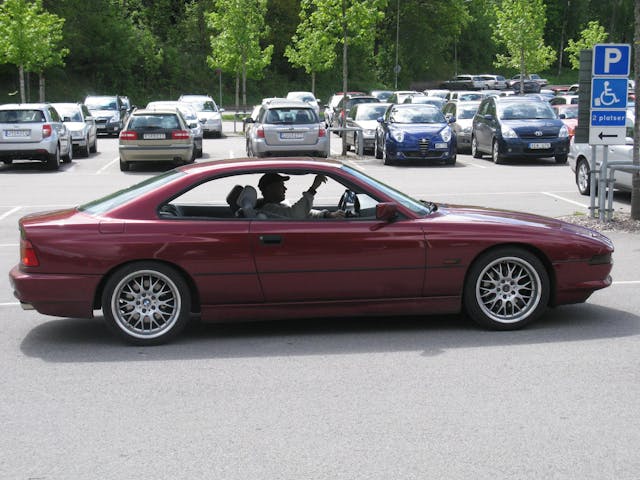
With the size of BMW’s signature double kidneys increasing over the years to the point where they threaten to devour small countries, most classic BMWs with reasonable-sized kidneys look vintage-correct and unencumbered by marketing run rampant, and the kidneys on the 850i are especially thin for a car built in the last 30 years. And, complexity-wise, the V-12’s dual control system notwithstanding, these days any production vehicle is more complicated than an E31 8 Series.
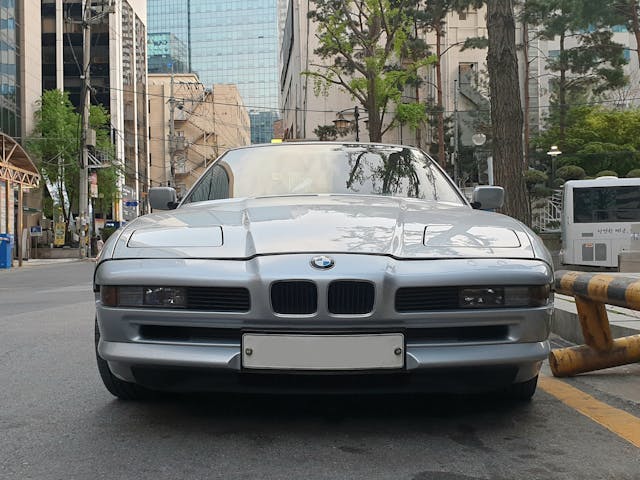
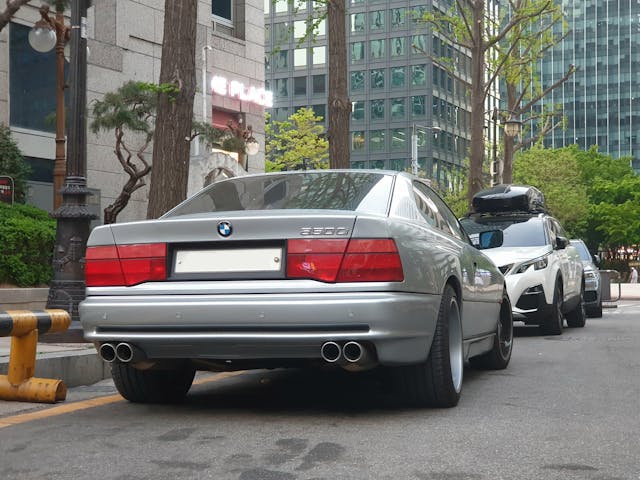
And—here’s the kicker—the 850i was available with a six-speed manual gearbox. According to Wikipedia, it was “the first V-12 engine mated to a six-speed manual transmission on a road car.” [I suspect someone will sculpt a definition of “road car” to allow some Italian exotic to challenge this.] Only 847 V-12 stick cars were imported to the United States, so they’re certainly not common. Worse, the transmission isn’t the Getrag 420G used by V-8 stick BMWs of that era, but a Getrag 560G whose only other application I’m aware of is a Maserati Shamal, so it’s not like there’s a ready supply of them to press into service to convert an automatic car.
(Note that in addition to 850i six-speeds, there is the über-rare M-prepared 850CSi, basically an M8 without the M badge. There were only 225 of these imported, and their value has skyrocketed.)
With all that in mind, in 2015, when gas was two dollars a gallon, I became fixated on the idea of finding a cheap six-speed 850i. It had additional resonance with me because I already owned both an E9 3.0CSi and an E24 635CSi, so the 850i would make for a set of BMW’s big two-door coupe triplets, one of each generation. (Well, yeah, there are other older and newer coupes, but humor me.)
It didn’t take long before I found the following Craigslist ad:
“BMW 850i V-12 six-speed for sale. I’ve owned the car for about 16 years. It has 150K on her. It needs exhaust work. This summer I took it out of storage and it developed an erratic idle when in neutral. Drives fine. Bavarian in Winchester believes it’s a combination of changing manifold gaskets, exhaust leak and/or O2 sensor. Needs shocks, driver’s side door only opens from inside. Eye turner but you need to put some money into her to be perfect. I’m selling for $5000 or best offer.” The photos weren’t great, but the car looked whole and intact. It was white, so in addition to being a unicorn, every white whale and great white shark joke was in bounds. And it was only 30 minutes away.
I spoke with the seller, and he gave me added information about the car’s condition. “Needs shocks” meant that a broken front strut mount was actually smacking the underside of the hood, so it couldn’t be driven far. He added that the exhaust was loud and there was visible oil burning. He said he’d already taken a deposit on the car but had the feeling the buyer wouldn’t complete the deal.
We stayed in touch. About a week later the seller contacted me and offered the car to me for $4000. I contacted a friend who owned an 850i six-speed and asked him what would be the walk-away criteria. He immediately responded, “Buy it. The transmission alone, if it doesn’t munch synchros, is worth that price.” I lightly protested that I already owned too many cars, and his response was a virtual slap: “Name the V-12 six-speed manual coupes on the planet … 850i, 850CSi, Ferrari something, Lamborghini something, Aston Martin Vanquish. That’s pretty much the entire list. [It’s a] $100,000 running V-12 manual unicorn that you will pick up for $4000. These won’t be around a decade from now. Buy the damned car, sir!”
Well, OK then. I made the appointment to see the running 850i six-speed and withdrew $4000 from the bank. Wouldn’t you?
Two nights later I drove up to Woburn, Massachusetts, to see the car. At a first walk-around it looked pretty good. I didn’t see any obvious rust or dents. There was a barely visible dimple where the strut had hit the underside of the hood. The engine compartment was far from immaculate, but it didn’t look like a dumpster fire either. White wasn’t a lust color for me, but fishers in the muddy end of the pond can’t be choosers.
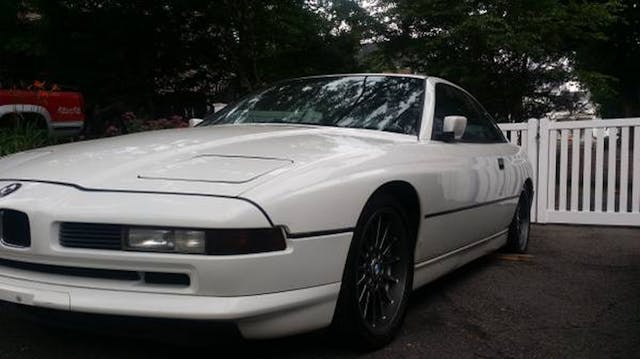
“Can I drive it?” I asked.
“It needs to be jumped,” the seller said. “850s have two batteries. I replaced one, but the other one is dead.” He pulled another car into position, fiddled with jumper cables, and started the big white coupe.
And that’s when I abruptly came face-to-face with the car’s loud exhaust and oil burning. This wasn’t a minor hole in the exhaust like the ones I recently patched in the Armada. This sounded like straight pipes on a dragster. I immediately thought that if I bought the car and started it like this in my driveway, my then-troublesome longtime neighbor would call the cops on me. And the oil burning cast a blue-white fog around the car like something out of a Mad Max film. (“In 2015, when society isn’t crumbling and gas is $2 a gallon, one man considers doing something really stupid.”) As I walked around the car, I noticed that all the smoke was emanating from the V-12’s right tailpipe, indicating that one bank of the V-12 was far worse than the other.
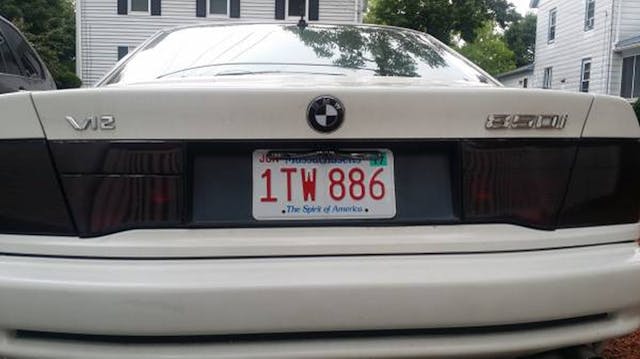
As the car warmed up, it settled into the oscillating idle that was mentioned in the ad. I got in and surveyed the interior. The 8 Series dashboard with its overlapping gauges is quite a break from previous BMWs. It’s not my cup of tea, but it’s part of the landscape. The interior was generally intact apart from an aftermarket stereo that stuck out too far.
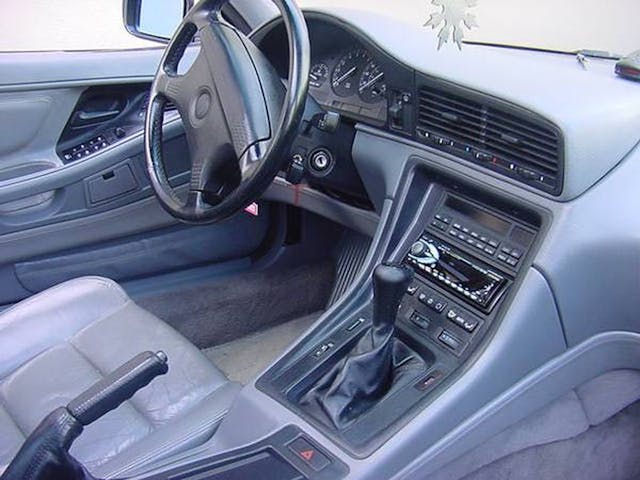
Then I found a problem that sounds trivial but was anything but: The electric seat wouldn’t budge. The seller was probably 6-foot-5, and I’m 5-8 in shoes. I had to slouch so far down to reach the pedals that, like the caricatures of “silver-helmeted” elderly drivers, my head barely cleared the steering wheel. So while I did take it for a test drive, the combination of all these factors—the banging front strut, the deafening exhaust, the James Bond-like oil fog, and the seat—made the drive consist of four very careful right turns that brought me back to the house. It was the antithesis of the get-it-on-the-highway-mash-the-pedal experience for which you’d buy a car like this.
It was a Thursday. The seller said he had other people coming to look at the car on Saturday. My window was right now, but I needed to think about it. The seller was my kind of a word-is-your-bond guy—“Just call me and tell me that you want it, and for four grand it’s yours”—but he’d need to know by Friday night so he could cancel the Saturday appointments.
I went home and did what I do—deliberated in front of an Excel spreadsheet. The pros were the lure of the V-12 6-speed 850i, the bragging rights of snagging one for four grand, and the silly business of owning “coupe triplets.” But the cons—the obvious engine work needed to stanch the oil-burning, the broken front strut, the likely-expensive exhaust repair, the rough idle, the car’s general money-pit nature, plus the omnipresent constraints of space, time, and money and the murky issues of “opportunity costs”—that is, if you commit to this car, you pass on something else—made me think that this was a clear “no.”
My incredibly understanding wife, who had heard the peaks and valleys of my excitement and disappointment, weighted in. “So, you’d buy this, drive it for a while, write about it, then sell it?” she asked.
It was, of course, a very good question.
While I am somewhat strategic in terms of buying needy cars that generate content for these pieces that keep y’all entertained, I do pride myself on being fiscally responsible enough to not cause financial harm to my family. The cars I buy need to make sense to both the left and right hemispheres of my brain. That is, I have to both want them and be able to rationally justify them. At this point (in late 2015), I’d recently published my first book, was gainfully employed at Bentley Publishers, and was writing my second book. I was feeling pretty confident having made the jump from engineer to full-time automotive writer, and I’d gone on a bit of a spree—I’d recently bought the Lotus Europa, the BMW Bavaria, the Euro 635CSi, an E30 325is, and two 2002tiis, all of which nudged the car count up to a then-unprecedented 12. My left brain looked at all this, deemed it the excessive behavior that it clearly was, and gave me an edict: You can buy the 850i only if you can make the case that you won’t lose money on it.
And how did that case go? Thrown out before it even came to trial.
Nowadays, you’d be unlikely to find any bargain 850i six-speed, but in 2015, I checked eBay for completed listings and found a well-sorted attractive example with 200K that sold for $10,500, one with minor issues that sold for $8500, and a needy but drivable car that went for $6500. So if I paid $4000 for the white one, I’d need to make the case that I could make it whole and drivable for $2500, and it wasn’t even close. I sent a detailed email to the seller backing away from the purchase. I’d reasoned it through. I was happy with the decision. And that was that.
Until the following night. My wife and I were out to dinner with a friend. I had a few beers in me. I was telling him the story about the Great White Six-Speed Shark. Suddenly, like Hugh Grant in Notting Hill, I realized that I was an idiot. I’d made the wrong decision. Screw my left brain—my right brain wanted the car! [“I’m just a boy … standing before a Shark … asking it to love me.”] When I got home, I contacted the seller and literally sent him a photograph of the stack of hundred-dollar bills that I had not yet re-deposited in the bank. He said that if the fellow coming up from New York didn’t buy the car, it was mine. However, a day later, he texted me a pic of the car loaded on a trailer.

And that really was that.
Interestingly, a few months later, a cheap, needy, black 850i six-speed showed up in New Hampshire. This one was more drivable than the white one, but it munched second and third gear, and the front end shuddered over 40 mph like it was going to fly apart. Recalling what my friend had said about the unavailability of the 560G gearbox, I made the same decision. The Great White Six-Speed Shark and this black one kind of swirled together in my mind as an 850i six-speed yin-yang Zen-like “this is never going to be your fate” symbol.
A few years later I made one more try. As I wrote about in a piece called “The Rules of Attraction,” if you love the exterior lines of a car, love the look of the interior, and love the way it drives, then you’re hooked. I loved the 850i’s exterior look, but the fact was that I was lukewarm about the interior and had still never driven one at highway speeds to see if I’d actually enjoy it. So I contacted a guy who had an 850i automatic for sale and candidly explained that I really wanted a six-speed but offered to pay him for a decent test-drive in his car. To my surprise, he said, “Actually I have a white six-speed that I’m working on, but it’s not yet drivable.”
Somewhere off in the ether, I felt one side of the yin-yang symbol vibrate. “When you bought it,” I asked, “did it have a broken front strut and burn oil out one tail pipe?”
“How could you possibly know that?” the guy asked. I told him the whole story. He’d bought the car from the guy who came up from New York, who bailed out of it, and he’d never fixed it either. We had a good laugh over it. I never wound up driving his automatic and never followed up on the white car. Things sometimes just run their natural course.
The days of the cheap 850i are over—E31 cars, both stick and slush box, have rebounded from their bargain-basement prices. The days of my lying in a dark room, thinking about an 850i V-12 six-speed and waiting for the pain to pass, have ended as well. But whenever I see one at a BMW event, I walk around behind it and think, “Damn, that’s a nice fat planted-looking rear end that looks NOTHING like an A60 Supra.”
***
Rob’s latest book, The Best Of The Hack Mechanic™: 35 years of hacks, kluges, and assorted automotive mayhem is available on Amazon here. His other seven books are available here on Amazon, or you can order personally-inscribed copies from Rob’s website, www.robsiegel.com.
Check out the Hagerty Media homepage so you don’t miss a single story, or better yet, bookmark it. To get our best stories delivered right to your inbox, subscribe to our newsletters.








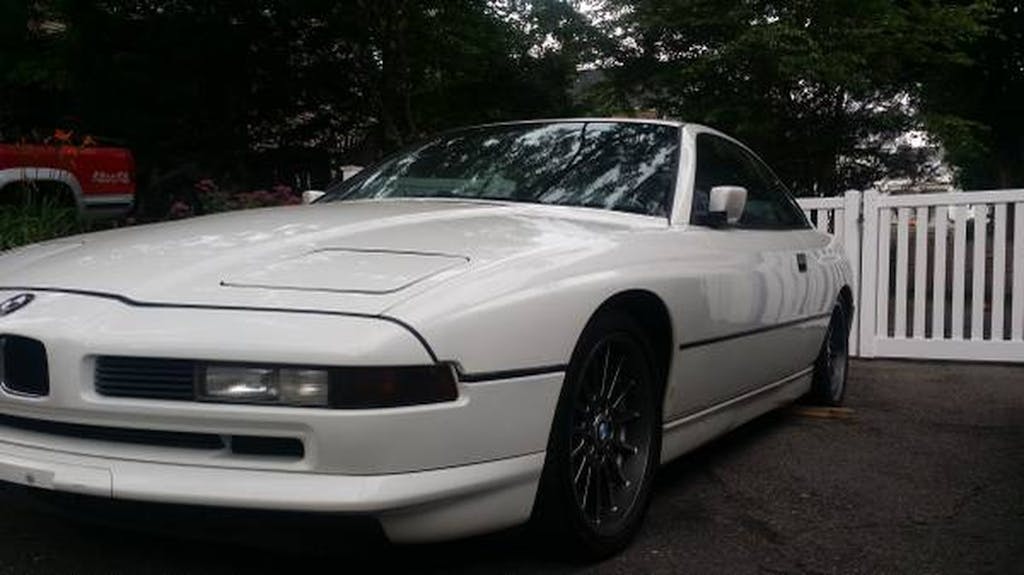



Rob great story, again overthinking a situation can sometimes lead to a less desirable outcome. It is hard to believe a $100,000 car for $4,000 talk about a drop in value. How ever your description reminds everyone why these cars are for the rich and famous. They are technological complex and expensive to repair. I have several colleagues that drive MB S Class sedans and they always say Helen if you ever get one don’t keep it past the expiration of the warranty, that is why they get new ones every couple of years. However I will never have that problem as we only drive American. again great story and we would like to see you get an 850 some day.
One small niggle:
“and looked a bit like what was then the current Toyota Celica Supra (second-generation A60)”
1990 was halfway through the model life of the A70 Supra.
I didn’t say they were built at the same time. I said that the 850i looked like the A60 when it was released.
https://en.wikipedia.org/wiki/Toyota_Supra#Second_generation_(A60;_1981)
Whoops! I read your comment too quickly. I see that I said “then the current.” You are correct. My mistake. Thanks for catching it.
And when you bought a Supra, it was not a money pit.
I agree on that, but it kind of depends on how many engine swaps you do on it…
Rob, I worked at a BMW dealer when these were current. They were awesome and pigs at the same time. I did get to drive a V12 stick and in my memory the transmission was truly heavy-duty to actuate, a bit too much to feel pleasurable. As complex as a modern car? That was right at the time CAN-BUS network systems were arriving and IIRC this was an early exponent thereof. I do recall it had the fattest wiring harness of all time, filled with dozens and dozens of small wires and our techs had to make extensive use of the factory-provided “breakout boxes” to troubleshoot stray electrons. The power windows could be difficult and while maybe not as bad as a Jag XJC coupe (close antecedent in the history of V12 coupes), the sealing between front and rear windows wasn’t great (but maybe better than you E9?). And the 840’s all seemed to need new engines (Alusil or Nikasil, my memory fails me … bad American gasoline, said the factory reps), but you were only considering the V12. John.
I pulled into the local gas station in my 1 Series, and the fuel attendant (I live in that state) pointed to his 8 Series sitting in one of the parking spots. He bragged about how he picked it up for $3500, and I felt a little jealous at the time. Fast forward about a month and the 8 Series is not in the parking lot and he is complaining that he can’t find anyone to work on it. I said that’s the problem with these cars…
Rob. That car is a knock out in white. But as other readers noted there is a reason they cost $100K new. They are complex. May I suggest if you need a wedge design to fill out your collection, a TR-8 or the less powerful TR-7. These cars are attractive and they have Lucus electronics so having one could offers you numerous opportunities to write articles for this sage publication.
Great story, great car. My younger brother had four. One automatic and three 6-speed CSi versions.
Such slick looking cars. 928 to me is even better. I wouldn’t want to have to pay to keep either on the road, but awesome cars.
As so often, you have lived out in even more detail and in greater depth many of my own automotive fantasies. I kept passing on 8-series cars, which were once even rarer in Canada but then flooded in from Japan because of our 15-year rule on used cars (as opposed to the 25-year rule in the US). I was too worried about the cost of keeping such a car going, esp. in a remote and smaller market. I even had a chance to buy a fairly solid six-speed V12 for under CDN$7500. But I bailed, fearing both costly bills and the high fuel consumption. IIRC, the gearbox felt stiff and heavy. Good thing I did because my wife refused a Boxster soon after because the clutch and gearbox were too heavy for her taste (“truck-like”, in her words); she would have hated driving the 850i. I never considered buying an automatic though I saw far more of them. An old Caprice would be just as much fun from my perspective…
I recall them from when I worked @ a BMW dealership: gorgeous but complex, once we were actually able to get them. They were initially stranded at the docks because the US disliked their plastic fuel tanks, IIRC. Windows that sealed into the roof were fussy to make work correctly when that last 1/2″ quit happening.
This many years later, “Break My Wallet” may be the name to use for one with a list of problems.
Having no upper B-pillar between the windows makes them Hardtops, regardless of Marketing terms.
Rob,
I love your writing, and your willingness to admit that you are rational, when you had 12 cars. I’ve always loved BMWs (up until the Bangle era anyway) and the 850 6-spd in particular, but they were always a little scary for the reasons you have described. They were really aesthetically an evolution of the M1 which you didn’t mention. There is an 850csi at the BMW museum in Munich, I assume you have been there.
It happened to me, only in green. It still hurts many years later.
I don’t think the 850 and the A60 Celica Supra look alike at all but both look great. If you had an 850 you probably would have at least 10 articles of pain you would have had ready to write. They still look great today when you see them.
Glad you dodged a bullet, I was not so lucky but as they say “ignorance is bliss”. My best friend called to tell me 4 years ago that his neighbor had some sort of BMW in her garage that she was thinking about selling. Would I come over and give her some idea of what it’s worth? I own a BMW and that is as far as my knowledge goes but what the heck I’ll give it a shot. Well there sat a black 1991 850i auto in all it’s cobwebbed glory. Hadn’t run in 5 years since her husband passed. Batteries were dead but I did manage to get enough power to it to read the 64,830 miles on the odometer. Wow! I’ve loved the looks of these cars from when they first were introduced….I was nibbling at the bait. I had no idea what an old non-running BMW was worth but I said “maybe $12K”. And just like the hammer at an auction she said sold and that’s how I became the owner of a 4,000 lb paperweight. I quit counting the money I’ve put into it. Stopped at $25K. This is the ultimate “gotta know a guy” car since most BMW mechanics who worked on them are either dead or retired. Enthusiast groups are a necessity. Laptops loaded with the diagnostic software and connectors are available as well as some NLA parts. Thank god for 3D manufacturing for replacement plastic bits! Wouldn’t change a thing though. I love this car!
Rob, There’s a reason an 80K car is selling for only 4K. What do you think your estimate would be to get that car in decent running condition??
Should get a huge sign: It’s a Hybrid…….burns gas and oil!
Bob, I’m totally stealing that!